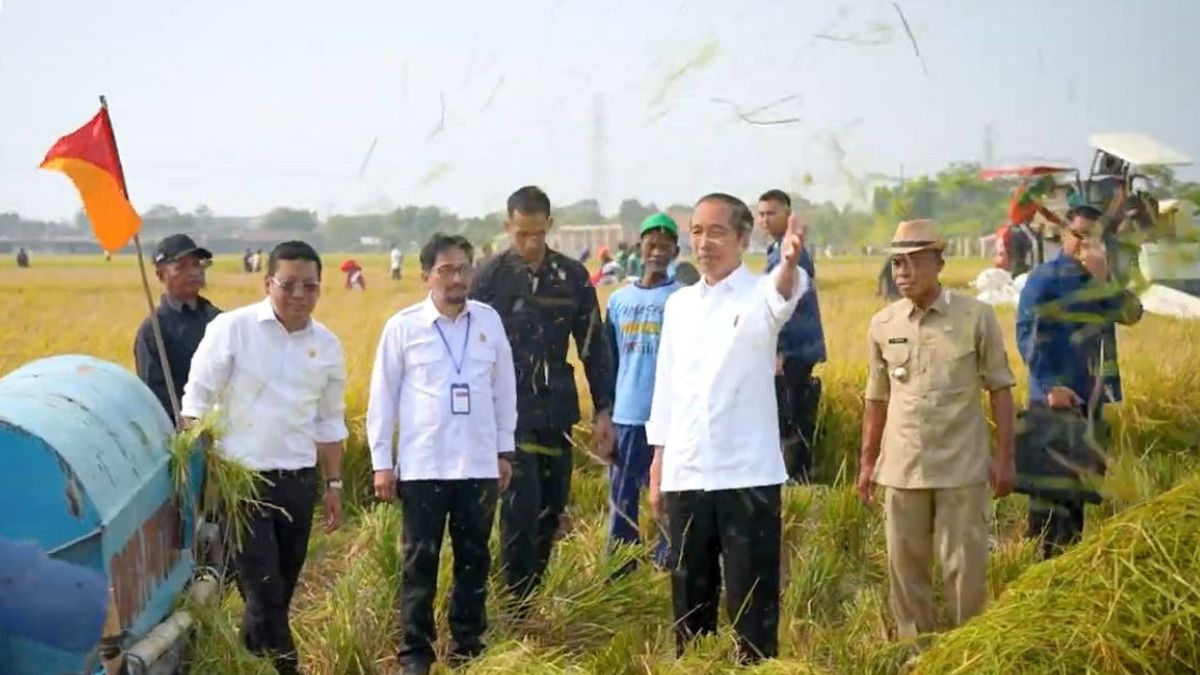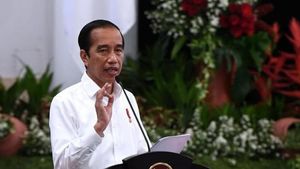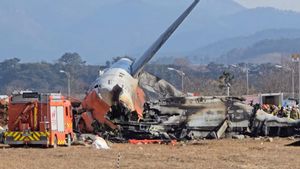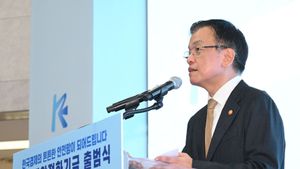JAKARTA - President Joko Widodo Desa held a rice harvest activity in Ciasem Girang Village, Subang Regency, West Java. The harvest, which Jokowi participated in, generated 9 million tons per hectare.
Jokowi is happy to see this condition. The reason is, the maximum yield of rice usually only occurs in the first half of every year.
"Yes, indeed in that one year, in the first half, the harvest is usually high because large harvests are usually in March, April, which is high. Then in the second semester it fell," Jokowi was quoted as saying on the Presidential Secretariat's YouTube show, Sunday, October 8.
From the positive impact of harvesting activities in Subang, Jokowi is optimistic that the harvest season in other areas such as Indramayu will also produce quite a lot of rice, so that it can increase rice reserves.
"I am happy to see the results, I think how many tons can this one hectare be, sir? It can be 9 tons. Because I see it is very crowded, and we hope that from these harvests the supply of rice can increase our reserves," explained Jokowi.
اقرأ أيضا:
However, Jokowi admitted that the El Nino phenomenon which had a long dry impact in Indonesia resulted in reduced rice reserves. Thus, the government plans to add 1.5 million tons of rice stocks by the end of 2023.
"From the current stock in Bulog of 1.7 million tons, we are still adding more until the end of the year of approximately 1.5 million tons," said Jokow
"The problem (El Nino), therefore why do we add 1.5 million tons of our reserves, because any El Nino has an influence on production, has an influence on the existing harvest," he added.
The English, Chinese, Japanese, Arabic, and French versions are automatically generated by the AI. So there may still be inaccuracies in translating, please always see Indonesian as our main language. (system supported by DigitalSiber.id)















